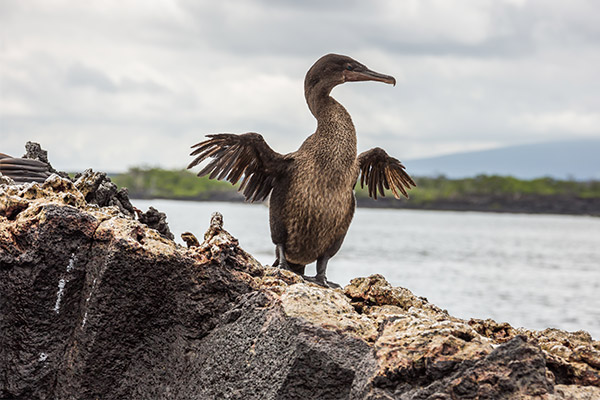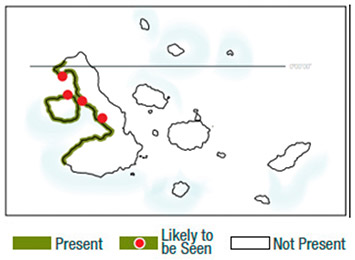
Flightless Cormorants live only on Isabela and Fernandina Islands in the Galapagos. Their isolated home has a constant climate, plenty of food, suitable nesting sites, and few predators. This means the cormorants have little need to take flight, so through evolution they have sacrificed that ability and become honed for an aquatic lifestyle. Large wings trap air and create drag in the water, so over time the wings have become smaller to facilitate speedy and efficient swimming. The cormorants use their powerful feet to paddle after the fish and octopi they love to eat.

Flightless Cormorants are threatened by both net-fishing and the introduction of non-native predators like cats, rats, dogs, and pigs. Current conservation efforts are focused on restricting fishing, controlling introduced species, and monitoring cormorant populations. With a total population of around 1000 individuals, the Flightless Cormorant is one of the rarest birds in the world, and a highlight of visiting the Galapagos in February.
Join our exclusive small-ship charter in the Galapagos Islands
February 6 - 16, 2023 | Learn more
Limited availability!
February 6 - 16, 2023 | Learn more
Limited availability!


